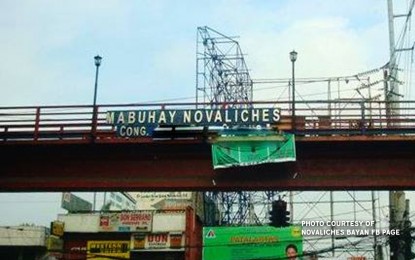
(File photo)
MANILA – If the town of Novaliches was not erased from the map of Rizal province over a century ago, it would have been 165 years old last Sept. 22.
History shows that Novaliches was created as a municipality of Bulacan province on Sept. 22, 1855. After three years, it was transferred to the then province of Manila until the outbreak and even after the end of the 1896-1901 Revolution.
When the Rizal province was created during the early American regime in June 1901, Novaliches was included as one of the municipalities of the infant province.
However, the reorganization of the local government units across the country as part of economic reforms by the US government caused the reduction of Rizal's 32 towns to just 15 in 1903. Among the affected towns was Novaliches which was incorporated with the then neighboring town of Caloocan, with the latter as the surviving unit.
In July 1948, the infant Congress of the Philippines enacted Republic Act No. 333, making Quezon City the new capital of the country, replacing Manila.
This necessitated the expansion of the original Quezon City territory northward, beyond the La Mesa dam/reservoir and encompassing half of the former town. The other half, now called North Caloocan, remains with Caloocan, which became a city in 1962.
As a result of RA 333, a part of Novaliches became a stepdaughter, with QC as the stepmother. It also became a classic example of a vignette about a stepdaughter being older than the stepmother. Novaliches was then (in 1948) already 93 years old, while QC, which was created in October 1939, was just nine years old.
Here are some of the other vignettes about Novaliches:
-Novaliches is the only barangay (formerly called barrio) in the country today which has its own diocese--the Diocese of Novaliches. The seat of the diocese, usually a province, a city, or a town, does not appear in the country's map, like the Dioceses of Imus in Cavite, Malolos in Bulacan, or Tagbilaran in Bohol. The Diocese of Novaliches was created by Pope John Paul II on Dec. 7, 2002.
-The Mindanao Food Corporation (MFC) is located, not in any of the 27 Mindanao provinces, but in Barangay San Agustin, Novaliches, Quezon City., Its website says MFC has been in Novaliches since the early 1970s, processing and exporting marine products. Its business address: 69 Susano Road, San Agustin, Novaliches.
-Novaliches is shared by Quezon City and Caloocan City, but the Roman Catholic churches in over half of the territory of each city are under the jurisdiction of the Diocese of Novaliches. Quezon City has its own Diocese of Cubao, while Caloocan City also has its own Diocese of Caloocan.
-The former Manila Paper Mills, which manufactured all kinds of paper products from the 1950s until the early 1980s, used to be located, not in Manila itself but along Quirino Highway in Barangay Talipapa, Novaliches. The former site of the factory is now dominated by condominiums and other residential structures.
-At New Haven subdivision in Barangay Kaligayahan, Novaliches, one can have a quick tour of the old province of La Union, the regional center of the Ilocos Region. This is because the street signboards in the subdivision bear the names of San Fernando City and 19 towns of the province, including Agoo, Aringay, Bacnotan, Balaoan, Bangar, Bauang, Damortiz, Luna, Naguilian, Rosario, Santo Tomas, and Supiden.
The subdivision's main artery, which branches out of the Quirino Highway (formerly Novaliches-Ipo Road), is named Camilo Osias Ave., after a former Senate president and first Filipino superintendent of schools in the country.
Quirino Highway was renamed after the country's sixth president, Elpidio R. Quirino of Vigan, Ilocos Sur, who built his summer rest house atop a hill overlooking the scenic La Mesa dam in Novaliches, where he died on Feb. 29, 1956. (PNA)
